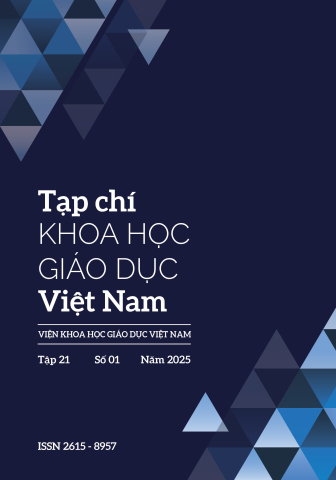[1] Ainley, J. and R. Carstens. (2018). Teaching and Learning International Survey (TALIS) 2018 Conceptual Framework, OECD Education Working Papers, No. 187, OECD Publishing, Paris, https:// doi.org/10.1787/799337c2-en.
[2] Bellibaş, M. S. (2022). Empowering principals to conduct classroom observations in a centralized education system: does it make a difference for teacher self-efficacy and instructional practices? International Journal of Educational Management 37(3). DOI 10.1108/IJEM-02-2022-0086.
[3] Fornell, C. and Larcker, D. (1981). Evaluating Structural Equation Models with Unobservable Variables and Measurement Error, Journal of Marketing Research 18(1), 39-50.
[4] Hair, J. F., Black, W. C., Babin, B. J. and Anderson, R. E. (2010). Multivariate data analysis, Prentice Hall. Englewood Cliffs.
[5] Henseler, J., Ringle, C. M. and Sarstedt, M. (2015). A New Criterion for Assessing Discriminant Validity in Variance-based Structural Equation Modelling, Journal of the Academy of Marketing, Science 43(1), 115-135.
[6] Heggestad, E. D., Scheaf, D. J., Banks, G. C., Monroe Hausfeld, M., Tonidandel, S., & Williams, E. B. (2019) Scale adaptation in organizational science research: A review and best-practice recommendations, Journal of Management, 45(6), 2596–2627. https:// doi.org/10.1177/0149206319850280
[7] Huber, S.G. and Skedsmo, G. (2016). Teacher evaluation - accountability and improving teaching practices, Educational Assessment, Evaluation and Accountability, 28(2), 105-109.
[8] Nunnally, J.C. and Bernstein, I.H. (1994). The Assessment of Reliability, Psychometric Theory, 3, 248-292.
[9] OECD. (2018). TALIS 2018 database, Download from từ https://www.oecd.org/en/data/datasets/talis2018-database.html#data.
[10] OECD. (2019). TALIS 2018 technical report, OECD publishing, Paris
[11] Sousa, V. D., & Rojjanasrirat, W. (2011). Translation, adaptation and validation of instruments or scales for use in cross-cultural health care research: A clear and user-friendly guideline, Journal of Evaluation in Clinical Practice, 17, 268–274. https:// doi.org/10.1111/j.1365-2753.2010.01434.x


